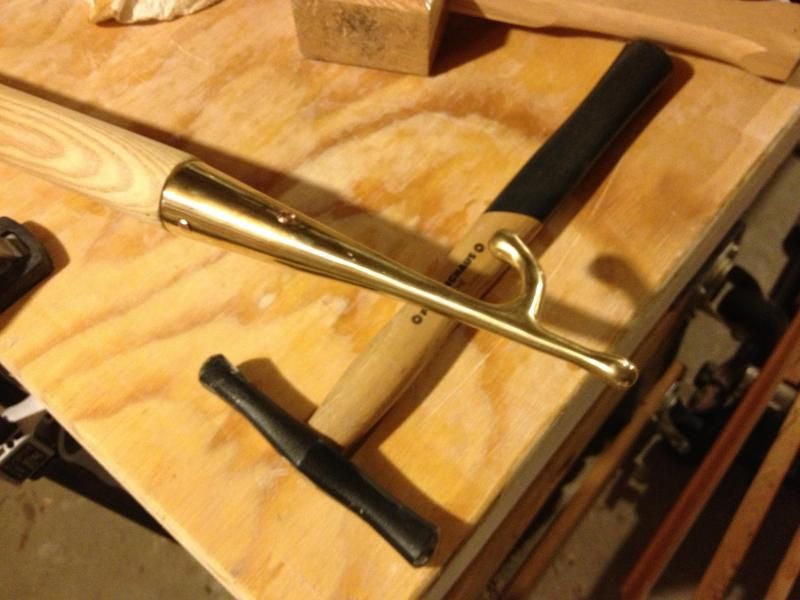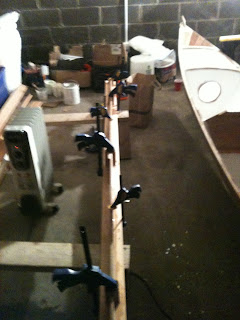Here is the ash handle I bought way back when. You can see that the end that originally took the shovel head was too long and has been cut down and also is not steep enough of an angle to fit the boat hook casting.
Here I have already started to take some passes with a block plane, but it's pretty close to the original diameter. The center is marked on the end as are a couple of concentric circles to give me a gauge as I start cutting it down to keep it centered.
Down to the first circle, getting closer to the existing shoulder which is where the top of the boat hook casting will sit eventually.
Getting closer... The dark spots are from running a pencil on the inside of the casting before test fitting, gives you a sense of where it's touching. The inside of the casting isn't uniform and the closer it fits the stronger it will be.
Now we're getting pretty close. Taking down the high spots moves it up toward the shoulder about an 1/8th of an inch.
Next the holes are drilled from each side and lengths of 3/16 copper rod are cut to fit each hole so that an 1/8th of an inch or so is sticking out. The corners are beveled to make it slightly self aligning and then hammered into the holes to form the rivets. You could use screws, but rivets are stronger, look better, and are just saltier all around. Also they are really easy to do.
Here is one of the ends of the copper bar peened over. All it takes are light taps, I'm using a small blacksmithing hammer. The circle of divets around the rivet head are where the rounded head of the hammer is sliding down he side of the rivet head and hitting the boat hook. This is hammer movement is what gives it a domed shape and is the sign that it was done by hand.
And here it is with all four rivets peened over resting on the small planishing hammer I used to form the rivets.
Now I need to shape and sand the rest of the handle, apply a few coats of varnish and put some fancy ropework on it and it will be ready for a few decades (hopefully) of service.










